H. C. Andersen and the Latin School in Helsingoer 1826 - 1827
H. C. Andersen or Hans Christian Andersen is a Danish poet and author who is world famous for his adventures. H. C. Andersen was born in Odense Denmark on April 2, 1805 and died August 4, 1875 in Copenhagen Denmark.
H. C. Andersen is one of the Danish golden age's main characters and known for his bouquets and paper clips. We think he invented the braided Danish Christmas Heart, just as he was the inventor of object Adventure.
As a 14-year-old, the young poet Spirant H. C. Andersen decided to seek happiness at the Royal Theater in Copenhagen.
For a three-year period he was attached to the theater without fixed salary until he received his farewell in 1822.
The same year, H.C. Andersen under the pseudonym's first book - Youth Test . A tragedy from this book provided the author of the Royal Theater.
The episode was rejected, but at the same time the theater board agreed to help the young author to an education, after which he received help to complete a Latin school education in Elsinore 1826–27.
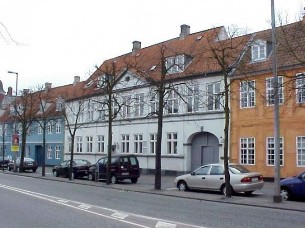 |
| Latin shool Kongensgade 12 Elsinore Denmark |
H. C. Andersen moved with the Meisling family on May 23, 1826, from Slagelse to Helsingør on arrival on May 25, 1826, where Simon Meisling had applied for the vacant post office in the Latin School. In Elsinore, his situation became worse compared to the rector Simon Meisling and his wife.
Denmark's great adventure writer H. C. Andersen, lived and was a student here for years 1826–27.
The school's principal, Simon Meisling, was a classical philologist, but his educational methods made the school years unpredictable to the young poetry. The conflict between the rector Meisling and the young poet's spire was about Andersen's unremitting urge for poetry in front of the more exact lesson. And at the same time, the young student of Meisling's spot, while Meisling's lady, was notorious. For having extradited affairs, and it was told she tried to seduce him.
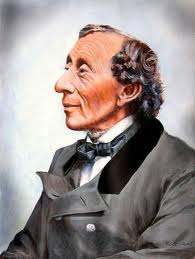 |
| H. C. Andersen |
H.C. Andersen was about 1.85 m high - approx. 25cm. higher than the average of its contemporaries.
The long-haired high pointer, the characteristic head with the deep-eyed eyes, the heavy eyelids and the big nose did not fall under the scope of contemporary beauty.
He applied To be ugly, separate - yes, even repulsive - and his outer figure raised mind and made a keen and comical impression on most.
However, this only affected the first impression. Those who taught the poet to know more closely, got a different impression and found his face alive and alright, his figure state and his appearance elegant. 'Just that, Simon Meislings wife could not stand for.
H.C. Andersen writes in letter Sunday, May 27th. 1826 to Jonas Collin, that he has now arrived in Helsingør and that he begins teaching with the student on May 28, 1826. .... I wish I wish! God give me power, happen what will! He can not leave me! In confidence of him, I will strive and hope that not all my dreams are imagination. I hope that Meisling will continue to interest me, therefore, with all fear! The disciples do not look as rebellious as I feared, and they even seem kind and kind to me...
Part of H. C. Andersen's stories were re-filmed by the Walt Disney concern in 1941.
 |
| H. C. Andersen |
The School years characterized H.C. Andersen, partly by formation partly by fear and mind-mindedness.
The married couple Meisling was very close and the troubled home was very messy and dirty, as rector Meisling was. Meislings wife was often in contempt with maids.
After his graduation degree (1828), H.C. Andersen's first works under his own name, and after the final second exam (1829), the young man phil. decided to engage in full-time poetry.
 |
| Sundtolden ophæves 1857 |
Upon arriving in Helsingør - and before his stay evolved into a trauma, he gave the following descriptive description of Helsingør at that time
In the light of Elsinore, Elsewhere did not promise me much, but now I is inside it, it seems to me a little Copenhagen ... Which way! How lively on the shipwreck, here some German Dutch speak their hollow language, there I hear the harmonious Italian, the longer she loads the coal of an English brig, so I think I can smell London. The whale is filled with ships that float along the coasts like beach gulls.'
H. C. Andersen finished completing his graduate degree in the capital. And then he could focus on his writing, which would make him one of the world's most beloved writers. - H.C. Andersen is the author translated to most languages in the world.
The first time of the writing (1828-1835) is characterized by rich imagination, happiness and vigil, as it tries forces with many genres. 1835 marks the great breakthrough of the poet first and foremost through the novel Improvisator , but also through the release of the first adventures: Adventure For Children .
The same year the poet had his foreign breakthrough, where he was known for the first time for his romance art.
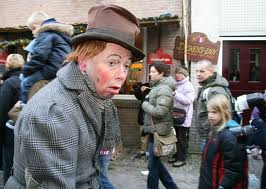 |
| Urian Heep London |
H. C. Andersen - Meetings with Charles Dickens
In June 1847, HC Andersen made his first visit to England and enjoyed a triumph and social success during the summer.
The Countess of Blessington invited him to her parties, where intellectual and famous 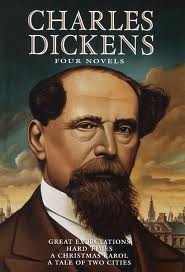 people could meet and it was at one of the parties he met Charles Dickens for the first time. They handed each other and went to the porch, which was a pleasure for H. C. Andersen.
people could meet and it was at one of the parties he met Charles Dickens for the first time. They handed each other and went to the porch, which was a pleasure for H. C. Andersen.
He wrote in his diary: "We went out onto the porch And I was so pleased To see And talk To England's current author, whom I love most." - Ten years later, Hans Christian Andersen visited ; England again, primarily To visit Charles Dickens.
HC Andersen lived In Charles Dickens home For five weeks.
Shortly after HC Andersen left, Charles Dickens published David Copperfield, featuring servant Uriah Heep, which Is said To have been inspired by HC Andersen.
The highlight of H.C. Andersen's career took place in Germany in 1846 and England in 1847, where he was celebrated on the most sumptuous.
Despite the stupid recognition abroad, H.C. Andersen arge opponents in Denmark.
At the Royal Theater, the poet had his biggest fighting and defeat, but after the monopoly of the theater was abolished, H.C. Andersen celebrates his popular breakthrough at the Casino.
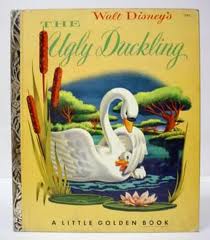 |
| ugly duckling |
The poet experienced his years of deterioration and the situation became more and more desperate for Andersen and every time he was told that no exception could not be made in relation to his continued schooling in Elsinore.
H. C. Andersen's support, Jonas Collin, was a very important administrator, financier and cultural personality in Copenhagen at that time and was the driving force behind H. C. Andersen's schooling.
Ethics Council and Head of Department of Finance Edvard Collin, who lived in Aalsgaarde, moved, after the pressure of a young teacher, Christian Werliin, H. C. Andersens schooling to Copenhagen to complete his student degree. Then he could poet as much as he wanted..
 |
| Kvitteringer til H.C. Andersen fra Simon Meisling For kost, lys og varme |
From the receipt it appears that approx. that Meisling Rector For Slagelse scholarship has received 50 richsdaler by disciple H. C. Andersen. For accommodation ... from 26 January to 26 April. Slagelse 21 February 1826. In addition, receipt: Litr. No. .
For H.C. Andersen is paid For light and heat to Helsingoer scholarship for April quarter 1826 with 2. Rdlr. 3 mk For which 2 Rigsdaler 3 Marks are hereby acknowledged. Helsingør 30 Aug. 1826th
If you can talk about conversing, 2 richsdaler and 3 marks = just over 15 cent answered.
In 1827, H.C. Andersen at the Latin School in Helsingør. He had for a long time and in a letter to, among other things, Jonas Collin and Christian Høegh-Guldberg in Odense complained about the conditions at school.
The situation became more and more desperate for H.C. Andersen and every time he was told that no exception could be made with the poet's continued schooling in Helsingoer.
While H.C. Andersen was unhappy about the situation, rector Simon Meisling became more and more decaying, he smelled never washed, he drank and the marriage with the wife went very badly.
All this wrote H.C. Andersen in long letters to, among others, Collin. Only when a new young teacher who taught in Hebrew, Christian Werliin, at school in the spring of 1827 personally addressed H.C. Andersen's Witnesses Jonas Collin, who spoke of the unhappiness and the hard-working educational methods, and about Meisling deroute, there was a change.
Meisling was informed that H.C. Andersen moved to Copenhagen. There was rented a room for H.C. Andersen on the 3rd floor of Vingaardsstraede 131, present no.6, where H.C. Andersen for the next 1.5 years received private teacher cand.theol. Louis Chr. Müller as a teacher.
The food could be H.C. Andersen get at Collin in Bredgade, Wulff at Amalienborg or with others in turn.
In his childhood time in Odense, Andersen was first in 1810-11 for two 'training schools' driven by a 'learning mother' by Marie Raaschou and a teacher called Fedder Carstens. Carstens' school was especially for Jewish children. After that, Andersen had a particularly extensive schooling in the city's poor school, especially after his father's death (1816).
Meisling's marriage was dissolved and he ended up as an alcoholic in Elsinore. Simon Meisling died in 1856.
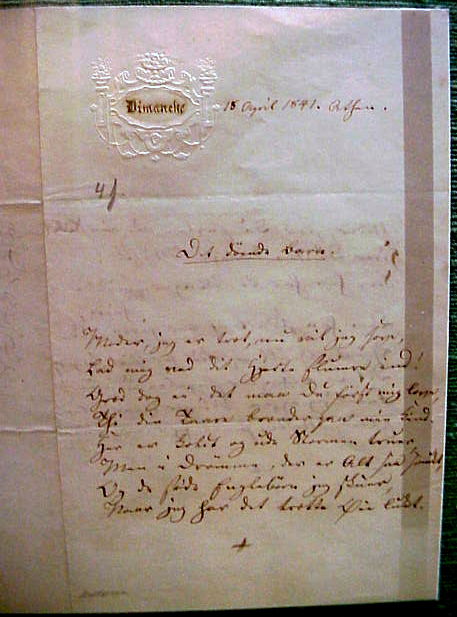 |
| Det døende barn |
The poem 'The dying child' appeared in H.C. Andersen's birthday in Elsinore while in the period 1826-27 he went to the city's Latin School. H.C. Andersen called Helsingoer for Small Copenhagen , and it was him who, after seeing the idyll of gurus, exclaimed: 'I think it's most beautiful in Denmark'.
H.C. Andersen had repeatedly worked on literary writings and contributed to reading, among others. For Commander Captain Peter Frederik Wulff at Amalienborg.
This happened, although in the application to the king of H.C. Andersen's education stated that there was a justified hope that the young H.C. Andersen through scientific formation will get away from the literary weighing and probably become a useful citizen.
H.C. Andersen went his own way and did not focus on this and his literary works and poems evolved in secret.
Perhaps Meisling's hard methods and pressures have counteracted H.C. Andersen, expressed in his literary works during the school period and afterwards.
It turned out to be about 50 poems in the years 1822-1826, and he was in the hidden guise of 'Poet devil' as H. C. Andersen himself called it.
The most famous poem from the period is 'The Dying Child' .
Mother, I'm tired, now I want to sleep. Let me by your heart sleep in. If you do not, you must promise me first. For your tears burn on my cheek. Here is cold and the storm is threatening. But in dreams, it's all so beautiful. And the cute angel kids I'm watching. When I have the tired eye smell.
Mother, do you see the angel by my side? Do you hear that delicious music? See, he has two wings beautiful white. Those he surely received from our Lord. Green and Yellow and Red For the Eye Floats. It's the Flower Angels pouring out !. I also get wings while I live. Or, Mother, do I get when I die?
Why do you push my hands? Why do you put your kind to me ?. It is wet, and yet as fire it burns. Mother, I will always be yours !. But then you should no longer be sad. If you cry, I'll cry with you. Oh, I'm so tired! - the eye must close -. - Mother - see! now the angel kisses me!
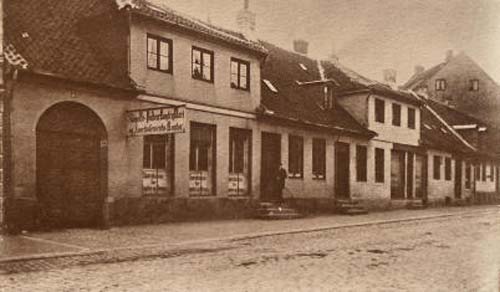 |
| H.C. Andersens school in Slagelse |
On October 26, 1822, H.C. Andersen's journey Towards Slagelse Latin School began.
The journey was abandoned by a postman and took a long time.
When Hans Christian Andersen arrived at Bredegade 4-6 in Slagelse, he was placed in the 2nd grade, between 11 and 12 year old boys, though he himself was 17 years old because of his lack of knowledge in most subjects.
When Andersen arrived at the school, he was initially residing at the herred fog denmark madam Erikke Henneberg in Bredegade 29.
The stay at the Latin school in Slagelse was not pleasant For H.C. Andersen.
He experienced defamation, ridicule and verbal assault, from the school's brutal rector Simon Meisling, among others. the rector's term of H.C. Andersen as the final poet was decisive.
H.C. Andersen did not like the structure of the school, and especially not the fact that the teaching lasted from kl. 9 in the morning until 18:00 in the evening.
Numerous styles and exams did not make any difference.
The pedagogy of the day was characterized by hardness, bullying and the use of nicknames from the teacher's and the rector's side.
H.C. Andersen obviously was not happy with the way in which he treated students.
H.C. Andersen thus writes 'The genius is an egg that needs warmth, to the fertility of happiness or it becomes a weed' .
This sentence uses H.C. Andersen in the novel 'only a playmate' from 1837.
Rektor Meisling ændrede karakter i perioden 1822-1826. han blev mere åben og venlig overfor H.C. Andersen.
Dette skyldes måske alt den bevågenhed H.C. Andersen fik fra kongen, og han derfor ikke længere turde lægge sig ud med H.C. Andersen.
In 1825, H.C. Andersen joined the rector Simon Meisling in Slagelse
The rector lived at the school, which was furnished with both school and principal residence.
The rector lived in the eastern side of the house, with wife and 5 children, as well as 3-4 servants.
After some time, Simon Meisling forced air renewal . He searched for a job as principal of Helsingør.
In 1826 he got the job and moved to Helsingør. After some thought, H.C. Andersen to move with Meisling to Helsingør/Elsinore Denmark.